Are you ready to improve your bike riding experience? Then, it’s time to learn how to lock your bike properly.
Keeping your ebike secure is crucial for protecting your investment and ensuring peace of mind when parked in public spaces. With the growing popularity of e-bikes, they have become more attractive targets for theft, making it essential to practice good locking techniques. This guide will provide you with practical tips and methods on how to lock an ebike using the right locks and techniques, helping you to deter potential thieves and keep your bike safe when you’re not riding it.
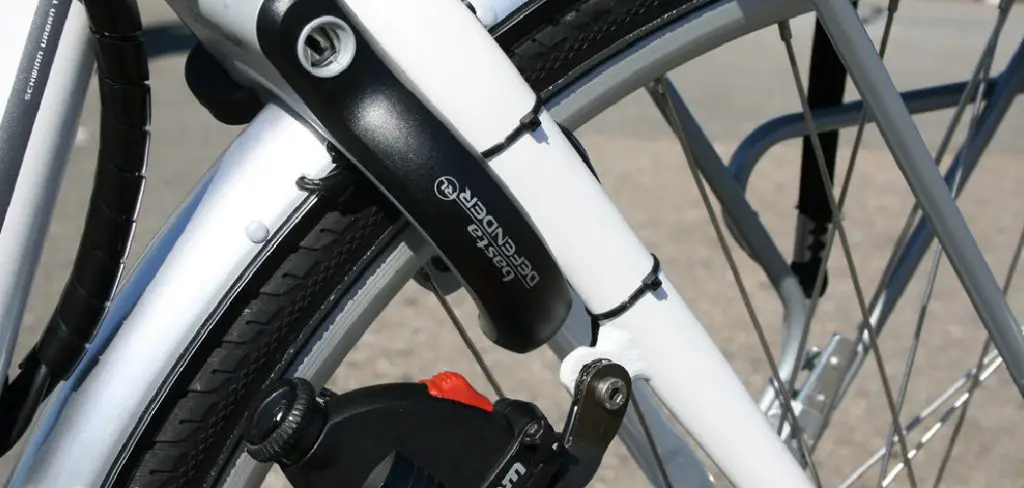
Whether you’re new to ebikes or looking to improve your security measures, this introduction will set the stage for understanding the best practices in ebike security.
What Will You Need?
Before we dive into the details of locking an ebike, let’s go over the essential items you’ll need to make sure your bike stays safe and secure.
- High-Quality Locks: The most crucial element in securing your ebike is a high-quality lock. Investing in a reliable U-lock or chain lock will provide the best protection for your bike. Avoid using cable locks, as thieves can easily cut them.
- Additional Security Measures: While a strong lock is essential, additional security measures, such as a wheel lock or alarm system, can help deter potential thieves.
- A Sturdy Bike Rack: When parking your ebike in public spaces, use a sturdy bike rack that is securely bolted to the ground. This will prevent thieves from simply picking up your bike and walking away with it.
- Spare Key(s): Always have spare keys on hand if you lose or misplace your primary key. It’s also a good idea to give a spare key to a trusted friend or family member in case of emergency.
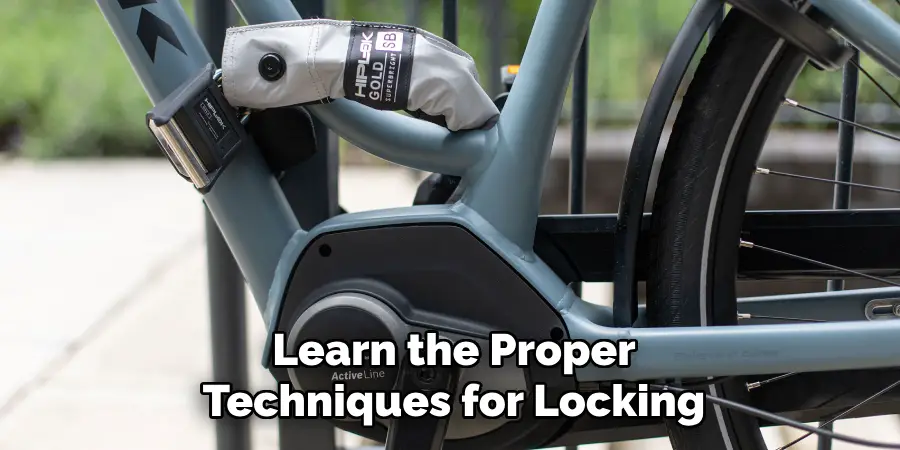
Once you have these items, you’re ready to learn the proper techniques for locking your ebike.
10 Easy Steps on How to Lock an Ebike
Step 1. Choose the Right Location:
Selecting the appropriate location to park and lock your ebike is the initial step to ensuring its security. Look for busy and well-lit areas, as these locations tend to deter thieves due to higher visibility and the increased likelihood of being caught. Opt for places with surveillance cameras or areas frequented by people, such as near cafes or office buildings, as these add layers of security.
Avoid secluded spots or areas with poor lighting, as they provide cover for potential thieves to work unnoticed. Park your ebike in designated bike parking zones, which are often monitored more closely and meant to minimize theft. By carefully choosing where to secure your ebike, you start with a strong foundation for protection against theft.
Step 2. Secure the Frame and Rear Wheel:
Once you’ve chosen a secure location, the next step is to lock your bike’s frame and rear wheel. Using your high-quality U-lock or chain lock, thread it through the rear wheel and the frame, then attach it to the bike rack or sturdy fixed object. Securing the frame and the rear wheel is crucial, as thieves often target easily removable parts. This method ensures that a significant portion of your ebike is locked, making stealing more challenging. Ensure the lock is tight and close to the frame, minimizing the space available for cutting tools to be inserted.
Step 3. Lock the Front Wheel:
To further enhance the security of your ebike, it’s wise to lock the front wheel as well. This can be done by using an additional U-lock or a sturdy cable lock. Thread the lock through the front wheel and around the bike rack or fixed object. Adding this extra layer of protection makes it significantly harder for thieves to steal your ebike by removing and replacing wheels. Remember, the more components you secure, the less likely your bike will be an easy target. Even if a thief manages to get past the first lock, encountering a second lock increases the time and effort required, often deterring them altogether.
Step 4. Remove or Secure Accessories:
After securing the main parts of your ebike, remember to consider the accessories. Items like lights, GPS devices, and saddlebags are often easy targets for thieves. Remove these accessories when parking your bike, especially in high-risk areas. For attachments that can’t be easily removed, consider using security bolts or screws to make them more challenging to steal. By ensuring that your accessories are either removed or locked up, you further reduce the chances of theft and protect your investment on multiple fronts.
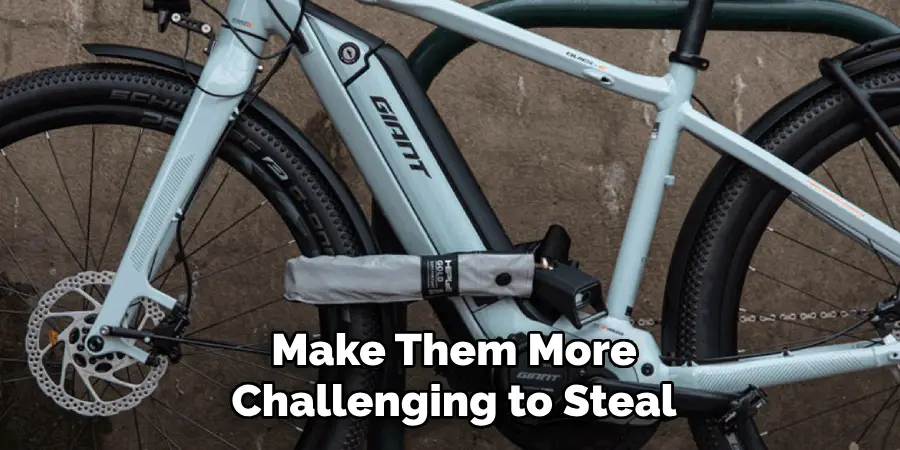
Step 5. Use Wheel and Frame Tags:
Another effective security measure is to use wheel and frame tags to make your ebike identifiable and less appealing to thieves. These tags typically include a unique serial number or identification code that can be registered with an online database. If your bike is stolen, this registration can aid in recovery by law enforcement. Additionally, thieves tend to avoid bikes with visible identification markings, as they complicate resale. Make sure the tags are applied in clearly visible areas and are difficult to remove without leaving traces.
Step 6. Keep an Eye on Parking Duration:
Being mindful of how long you park your ebike in one location can significantly impact its security. The longer your bike remains in a spot, particularly in less secure areas, the more time thieves have to attempt to steal it. When possible, avoid leaving your ebike parked overnight or for extended periods. Consider moving it to a different location if you plan on being away for an extended time. Regularly changing your parking spot can also make it less predictable for thieves, who may monitor when and where you leave your bike.
Step 7. Register Your Ebike:
One often overlooked security measure is registering your ebike with the local authorities or a national bike registry. This registration process typically involves providing your bike’s serial number, a detailed description, and proof of ownership. By doing so, you equip yourself with crucial documentation if your ebike is stolen and recovered by law enforcement.
Registration can deter thieves, as registered bikes are more traceable and more challenging to sell on the black market. Keep copies of your registration in a safe place, along with photographs of your ebike showing identifiable marks or modifications. Such records are invaluable in proving ownership and facilitating recovery if your bike is stolen.
Step 8. Invest in an Alarm System:
Incorporating an alarm system can significantly enhance the security of your ebike. These systems are designed to emit a loud noise when tampered with, drawing attention and often deterring potential thieves before they can attempt to steal the bike. Many ebike alarm systems have motion sensors that trigger the alarm if any movement is detected. Some advanced models also offer smartphone connectivity, allowing you to monitor your bike’s security in real time. Investing in an alarm system adds an active security layer that protects your ebike and provides peace of mind, knowing that any unauthorized attempts to move your bike will be immediately noticed.
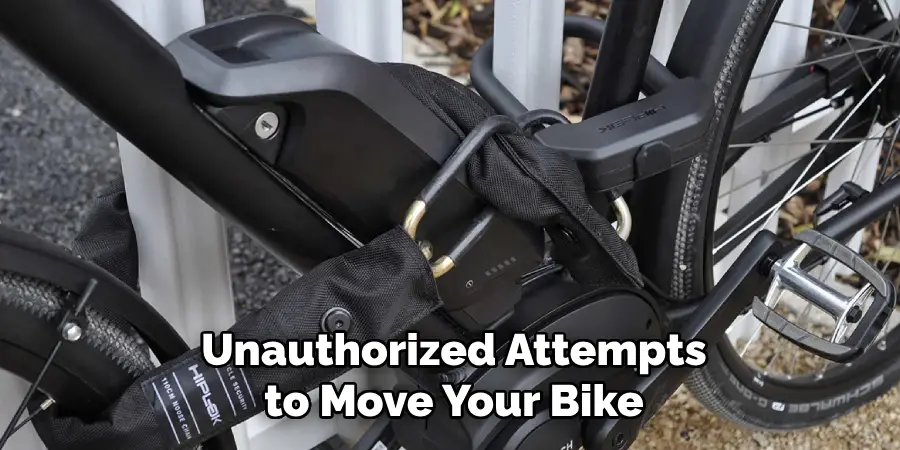
Step 9. Park in Well-Lit and Populated Areas:
Choosing the right location to park your ebike is critical to its security strategy. Whenever possible, park in well-lit and populated areas with a constant flow of pedestrian traffic. The presence of people and good lighting can deter thieves who prefer to operate in secluded or poorly lit spaces. Areas with CCTV cameras or security patrols are ideal, as they add a layer of defense against theft. If parking indoors, look for monitored or secure bike parking facilities. By selecting the right parking environment, you substantially lower the risk of your ebike becoming a target for opportunistic thieves.
Step 10. Maintain Consistent Security Checks:
Regularly inspect your security measures to ensure all locks, alarms, and tags function correctly and do not show signs of wear or tampering. This routine check-up will help you identify any weaknesses in your bike’s security and address them before they are exploited. Also, stay informed about the latest advancements in bike security technology to update your protection methods as needed. Consistency in these checks not only fortifies your ebike security but also helps maintain a habit of vigilance and awareness.
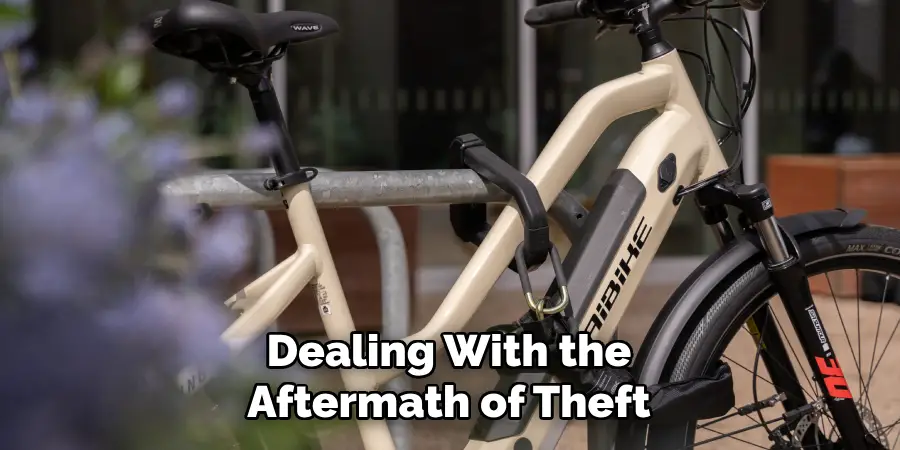
Following these ten steps can significantly reduce the risk of your ebike being stolen. Remember to stay vigilant and take proactive measures to protect your investment, as prevention is always better than dealing with the aftermath of theft.
Conclusion
How to lock an ebike requires a multi-layered approach that combines deterrents, tracking, and strategic parking.
Integrating various security measures—from using robust U-locks and chains to employing wheel and frame tags—creates a robust defense that can significantly reduce the risk of theft. Additionally, choosing secure parking spots, investing in alarm systems, and maintaining consistent security checks ensure that your protective measures remain effective over time. Always aim for a proactive strategy by staying informed on new security technologies and techniques.
Ultimately, safeguarding your ebike is about being vigilant and prepared to ensure your investment remains safe and secure for many future rides.
